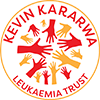Debunking common myths about leukaemia for better understanding and support

Myth 1: Leukaemia is contagious. This is not true. Leukaemia is a type of cancer that affects the blood and bone marrow, and it cannot be spread from person to person. It’s not like a cold or the flu. Believing this myth can lead to unnecessary fear and isolation for those diagnosed with leukaemia.
Myth 2: Leukaemia is caused by lifestyle choices or personal “fault”. Leukaemia is not caused by any specific lifestyle choices or personal faults. While certain factors like smoking or exposure to certain chemicals can increase the risk, many people with leukaemia have none of these risk factors. This myth can cause unnecessary guilt and blame.
Myth 3: Only people with a family history of leukaemia can get it. While having a family history of leukaemia can increase your risk, most people who get leukaemia have no family history of the disease. Leukaemia can occur in anyone, at any age, regardless of their genetic background. Believing this myth can lead to complacency and delayed diagnosis in those without a family history.
Myth 4: Leukaemia is always fatal. This is not true. Survival rates for leukaemia have significantly improved over the years due to advancements in treatment. The survival rate can vary depending on the type of leukaemia, age, and overall health of the patient. Believing this myth can cause unnecessary fear and hopelessness.
Myth 5: Radiation from phones or medical scans can cause leukaemia. There is no scientific evidence to support this claim. While high levels of radiation can increase the risk of leukaemia, the levels of radiation from phones and medical scans are far too low to pose a risk. This myth can cause unnecessary fear and avoidance of important medical procedures.
Myth 6: Leukaemia is not treatable. This is false. There are many effective treatments for leukaemia, including chemotherapy, radiation therapy, and stem cell transplantation. The treatment plan will depend on the type of leukaemia and the patient’s overall health. Believing this myth can lead to delayed treatment and poorer outcomes.
Myth 7: Children with leukaemia cannot lead normal lives. Children with leukaemia can and do lead normal lives during and after treatment. They go to school, play with friends, and participate in activities. They may need some accommodations, but they are not defined by their illness. This myth can cause unnecessary limitations and stigma.

